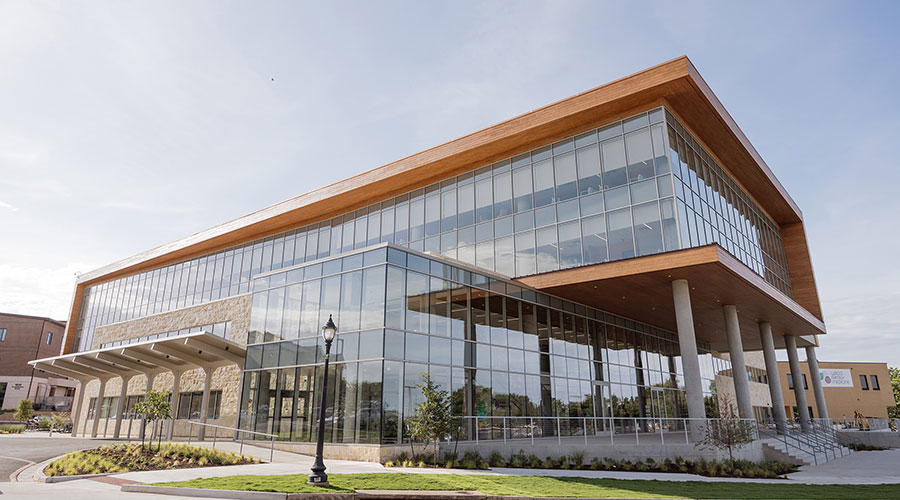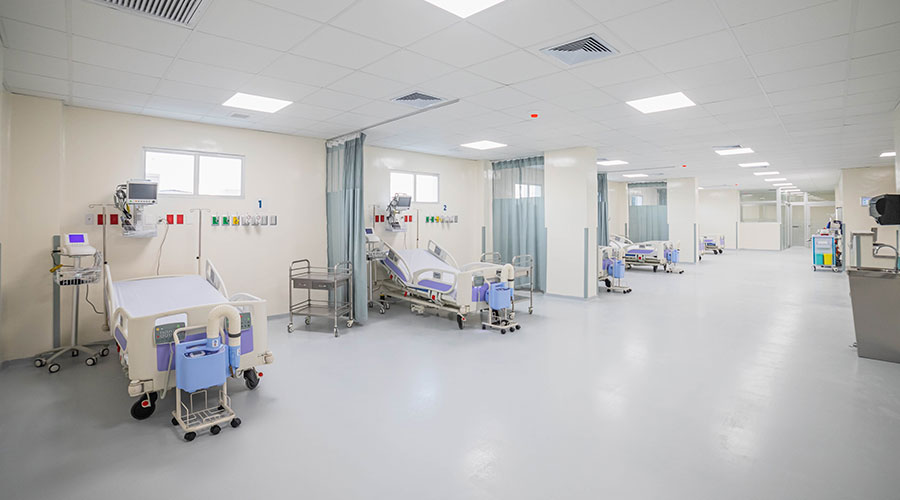Clinics, hospitals, and healthcare facilities require flooring systems that will withstand the test of time under high traffic conditions, allow for effective cleaning to facilitate a clean environment, and be comfortable for patients and employees alike. The floors in waiting rooms, in additional to meeting these functional requirements, should also be aesthetically designed to create a warm and inviting atmosphere.
As the waiting room is the first place most new patients will visit in a doctor’s office or hospital, making a positive first impression is crucial: flooring that is ugly, worn, dirty, or falling apart will reflect poorly on the facility, while an attractive, high-quality flooring system gives an overall impression of competence, diligence, hygiene, and care.
The harsh conditions of the modern waiting room
Over the course of a single day, most waiting rooms host dozens or even hundreds of people, often in a constant stream. Patients of all ages walk in and out, pace, move chairs, and otherwise put stress on the flooring system. Even when confined to normal business hours, these activities will begin to wear down an inadequate flooring system over time, and some waiting rooms in clinics and hospitals are even open 24 hours a day. Some conditions that can cause increased wear and tear to waiting room flooring include:
• What visitors track inside. Especially if patients enter the waiting room directly from the out-of-doors, shoes can truck in dirt, gravel, grit, and other abrasive debris that can wear down the flooring. During the winter, road salt can also be tracked in, and precipitation can lead to high levels of moisture on the floors.
• Harsh cleaning agents. In any medical setting, hygiene is of the utmost importance, and harsh chemicals may be used as part of a regular sanitation regimen designed to protect the safety and health of patients and staff alike. The flooring used in a waiting room should be able to withstand these cleaning processes.
• Food and drink spills. Snacks and sippy cups are an expected part of daily waiting room activity, so crumbs, food debris, and sticky spills are to be expected. If a vending machine is located nearby, spills of acidic soft drinks pose a threat to some flooring systems.
• Movement and storage of heavy equipment. For facilities that house and/or must move heavy equipment, a flooring system with high compressive strength is a must.
Epoxy and urethane floor coatings are a favored solution for many healthcare facilities, thanks to their outstanding durability, even when exposed to high levels of foot and cart traffic, chemical cleaners, and other harsh conditions.
Effective cleaning: A priority for healthcare settings
From hospitals to doctors’ offices and urgent care clinics, healthcare facilities can naturally expect to be exposed to a relatively high volume of bacteria, microbes, and other pathogens, as well as bodily fluids and other biohazardous substances. To protect the safety of patients and doctors, the floors in these waiting rooms should be designed for easy and effective cleaning to minimize the risk of the spread of infectious diseases.
Epoxy floor coatings and other fluid-applied flooring systems enhance sanitation by providing a smooth, nonporous surface that is virtually seamless, limiting the spaces where bacteria, mold, and other contaminants can accumulate unchecked. Floor-to-wall coving is an additional feature that can help enhance cleanliness by further minimizing seams and providing a continuous, liquid-resistant surface.
Attractive flooring designs for your waiting room
The waiting room is often the first area new patients visit in a healthcare facility, and it should be aesthetically designed to create an inviting and supportive atmosphere. Epoxy and similar floor coatings are high performing in terms of functionality and durability, but they are also a visually versatile option, coming in a wide variety of color and texture combinations:
• Solid colors. When considering solid colors, there are different options to choose from. Solid color pigments are available for various epoxy and urethane flooring. Some manufacturers can even custom match colors if requested. Solid colors are also available in both quartz (colored sand) and flake (colored chips). They can be a good option for facilities whose patients may experience visual impairments or sensory processing disorders. Bright colors can liven up a pediatric waiting room, while general facilities might favor calmer, more neutral colors.
• Color blends. Manufacturers typically offer color blends for both quartz and flake flooring as well. Again, some manufacturers are able to custom match both quartz and flake to carpet or other decor. To add an element of texture, the differently colored flake or quartz are broadcasted into a clear epoxy, which in turn creates an organic, nonrepetitive pattern. Flakes can also come in various sizes, large medium and small, each offering a different looks. When small flakes of similar colors are used, the result is similar to looking over an expanse of sand, while larger flakes of contrasting colors can be used to create a more striking, modern look.
• Graphics, logos and more. One benefit of epoxy floor coatings is that they make it relatively easy for a trained contractor to embed a logo or other graphic directly into the floor itself. Unlike an image that is painted onto the surface, it will not fade or warp with time, and a facility’s logo on the waiting room floor can make a lasting first impression. Geometric or organic patterns could also be designed, as well as arrows or pathways that direct the flow of traffic.
• Aliphatic or UV resistance. When installing epoxy or urethane flooring in waiting rooms, it’s very important to consider if the system is aliphatic or UV resistant. Why invest in an epoxy or urethane floor if it will yellow over time? After all, the idea is to create a beautiful yet functional floor that creates a lasting impression and ties into the decor. If the system is not aliphatic it will yellow over time and sadly, the floor will no longer have the same aesthetic effect.
Picking the right flooring solution
No one understands the unique needs of your healthcare facility and its waiting rooms better than you do, so don’t hesitate to reach out to a well-qualified epoxy flooring manufacturer to discuss any specific concerns or additional needs you may have. Some floor coatings can be formulated for slip resistance, increased waterproofing, and other specialized features. The balance between function and aesthetics can be difficult to strike in the waiting room of healthcare facilities, but epoxy floor coatings offer an economical, attractive, and long-lasting solution trusted by countless facilities across the nation.
Kendall Youngworth is a Senior Marketing Specialist at Tennant Coatings of Minneapolis, Minn.

 Waco Family Medicine Achieves Savings and Bold Design with Wood Selections
Waco Family Medicine Achieves Savings and Bold Design with Wood Selections Alleged Ransomware Administrator Extradited from South Korea
Alleged Ransomware Administrator Extradited from South Korea Design Plans Unveiled for New Intermountain St. Vincent Regional Hospital
Design Plans Unveiled for New Intermountain St. Vincent Regional Hospital Ground Broken on New Pediatric Health Campus in Dallas
Ground Broken on New Pediatric Health Campus in Dallas Pre-Construction Strategies for Successful Facilities Projects
Pre-Construction Strategies for Successful Facilities Projects